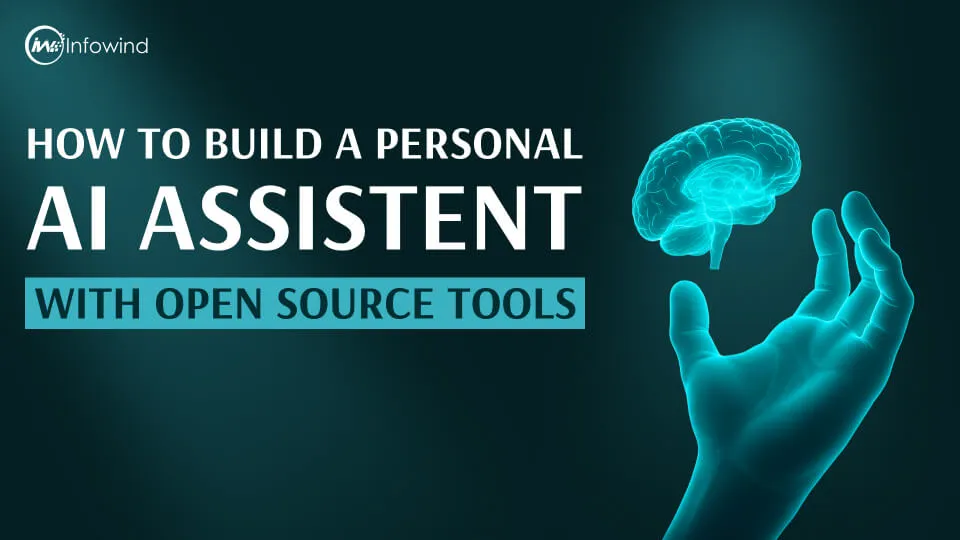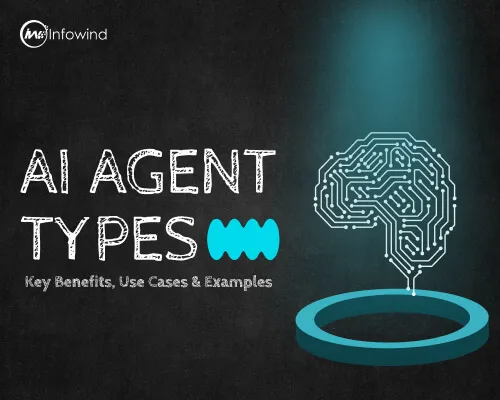AI assistants are virtual assistants that utilize modern technologies, such as NLP, ML, and LLM, to provide personalized support to users. Apple Siri, Amazon Alexa, and Google assistants are some of the well-known AI assistants. These AI assistants use artificial intelligence to help perform a lot of tasks, from setting reminders to automating the flow of work.
With the latest AI assistants flooding the market, the year 2026 will be marked as a turning point in the history of AI. The advanced AI capabilities make the assistants smarter. The growth and revenue of the business will be accelerated with the open-source AI.
Moreover, users demand control over data, so privacy force designs will be a priority in the coming years. The AI assistants can understand natural language, respond to commands, and perform specific tasks to assist users. The assistance can be text-based or voice-based.
It is transforming the industries and every domain, with AI in medical, healthcare, customer care, logistics, real estate, fintech, and many more, by using a voice-based AI assistant open source to improve their productivity and efficiency. AI assistants can be considered a perfect blend of technologies that help understand human languages and enable the software to perform tasks.
What You Can Do with a Personal AI Assistant
Build a personal AI assistant that can help you in automating daily tasks, enhancing productivity and communication, and providing personal support. To simplify the lives of the users, they offer personalized assistance and streamline their workflows. The AI assistants are much like they sound, providing artificial intelligence assistance to their users in everyday life.
These assistants not only enhance personal productivity but also make a difference in the professional aspects. Let’s discover some of the tasks that can be performed by a personal voice-based AI assistant open source.
Scheduling, reminders, and task automation
The AI assistants are pro at scheduling and automating tasks. They have a reminder setting and the powerful features that automate the workflow.
Custom voice control or text-based interactions
The voice assistants and text-based AI systems have eased the lives of people, and the open-source controls of custom voice-based AI assistants have enabled hands-free moments.
Email management, calendar access, and summarization
The email clutter has been refined with the automated processes of email management and calendar management. Long queries are now summarized by the AI tools to generate a brief.
Smart home integrations
The smart home devices and control appliances use the command controls to turn on and off lights, the thermostat, and smart gadgets that work with the digital assets.
Local LLM-based knowledge retrieval
The documents can be retrieved safely and stored locally by the assistants.
Why Choose Open Source?
The open source software ensures transparency and flexibility at lower costs. It allows anyone to use and modify the code in collaborative environments where users can contribute and make improvements to enhance the features. Moreover, an open source license can set up some standards for the projects.
The open source model runs locally, and so your personal data is out of the third-party server, ensuring safety. This software is majorly free to use, and therefore, there is no license fee associated. The freedom of using the code provides transparency between the users and also leaves a scope for flexibility and customization in the AI assistants.
Since it has a bigger community, a large number of developers contribute, thus fixing the bugs and making rapid changes and updates. There is no vendor locked in since it is not dependent on a single vendor, thereby giving more freedom to the users.
Unlike the AI assistants, i.e., Google Assistant, Alexa, and ChatGPT Voice, open source AI assistants empower users with ownership without binding them to the ecosystem or cloud policies.
Required Skills & Best tools to build an AI assistant
Are you fascinated and want to know how to make your own AI assistant? Then these are the prerequisites and the best tools to build an AI assistant that you must know as a beginner.
- Technical prerequisites: The core programming language associated with Artificial Intelligence is Python. It is a principal tech that one must have known. Also, there should be a clear understanding of how to use the APIs, call them, and connect the services. The basic shell scripting is used for automation and deployment.
- Open-source libraries: For building an AI assistant, you can consider a lot of open-source libraries and tools.
- LLM Frameworks: LangChain, GPT4All, and llama.cpp are the frameworks for running large language models
- NLP/ASR: The natural language processors for text-to-speech and voice recognition, Rasa, Coqui TTS, and Whisper (for voice)are the options.
- Orchestration Tools: To chain the tasks, the agent tools like Haystack and AgentGPT can be taken into account.
- Custom GUI/CLI: Simple dashboards are created for the assistant with Gradio or Streamlit.
To scale the AI assistants for maybe home, the optional integrations like Home Assistant, Node-RED, and Zapier are the alternatives. Keeping these Best tools to build an AI assistant in mind, you can create wonders.
Also Read: How to Build an AI Agent Like Manus AI: Features & Cost
Step-by-Step Guide to how to make your own AI assistant
Step 1: Define Use Case and Scope
Before developing any AI assistant, be clear about the scope and goals of the software. A few mandates, like what problem the assistant will be solving or who will be the end user, should be very clearly defined. Have a proposal drafted and an estimation handy. Create the visuals and the requirements documented.
Step 2: Choose an Open-Source LLM
Choose a local/open source LLM. To keep the data private, Llama-3.1, Qwen, Mistral, and Ollama can be picked.
Step 3: Set Up Local NLP/Voice Capabilities
Recognize how much data the AI assistant would require to generate human-like responses. The NLP will help in understanding and training the model. Setting up a local NLP or voice capabilities for personalization is required. The training data can be collected via public datasets, internal company data, web scraping, crowd sourcing, or real-world user interactions.
Step 4: Create Workflow Logic
To create the workflow logic, define core tasks, tool contracts, router+graph. It ensures a modular and transparent flow and generates outputs.
Step 5: Integrate with Tools (Google Calendar, Email, Home Assistant)
To perform meaningful actions in a workflow, integrate the tools with an AI assistant like Google Calendar, Email, and Home Assistant. It extends the capabilities of the assistant to another level and securely achieves the connection through the API’s. They fetch the upcoming events and remind you, draft the responses for email, and control your home activities via the IoT devices.
Step 6: Add Personality, Prompts, and Context
Adding personality prompts and contexts makes the assistant more personalized. It identifies the style and tone of a person and generates similar responses. It understands the behaviour of a character and provides desired outputs. Contexts provide an outline for the assistant to understand the scenario and reply accordingly.
Step 7: Deploy (Locally or in the Cloud with Docker)
Docker helps you deploy the AI assistant with a standard runtime on all the machines identically, whether it be on a laptop or a VM machine. Once everything is set up, deploy the code and let your AI assistant run.
Also Read: How Much Does it Cost to Build an AI Chatbot?
Sample Use Cases & Demo Scenario
Let us assume creating a mobile assistant that performs the tasks for you. It has text as well as voice recognition features. Exploring what tasks this AI assistant can perform and listing out the features and demo scenarios.
Consider that an AI assistant, named “Rosha,” has been developed. It is a personal productivity and lifestyle assistant that will help in blending the personal life with professional and beautify the personality by keeping them organized and systematic. Here are some answers that Rosha will provide when asked the following questions.
“What meetings do I have today?”
You have 2 events in IST and 1 meeting in the PST time zone.
11 AM -12:30 PM IST – Virtual meet with Gary (client) over Slack.
2 PM- 3 PM IST- Conference session by Dr. Vishwajeet at Krystal Room.
9 PM PST – 9:45 PM PST – Call with Danny on Teams.
This information was tracked by Rosha from the Google calendar, to which I had added all my meetings for the day.
“Summarize this PDF.”
Rosha will summarize the PDF shared by the client in around 150-200 words, giving the crux of the document. It can either annotate or summarize textually to save time in reading out and having a glance over. A detailed review is always needed to avoid any miscommunications.
Here’s the gist: the app audience is singles who are looking for a perfect match or to chat and befriend with the beauties around. Priorities: secure onboarding, multilingual content, and verified profiles. Risks: nudity or abusive content. Next steps: discuss the safety and security concerns, and how many people you can add as friends in a day, to be applicable.
“Play music from YouTube”
Rosha will browse the library and is most likely to play the favourites or most played songs to provide a personalized experience. Saying “Pause” or “Next” will be the options available.
“Remind me to drink water every 2 hours.”
Setting a reminder will always turn on a tone to notify you to drink water every 2 hours. A user may snooze so as to get a reminder again in a set limit of maybe 1-15 minutes or so, until it is cancelled after having a glass of water.
Challenges You Might Face
While creating an AI assistant, you may face the following challenges.
Resource usage and latency
If an AI assistant is deployed locally, then there might be a retrieval delay because of the running LLMs, and it might provide a bad experience to the users. There’s always a need to optimize the model size and cache embeddings.
Voice integration hurdles
An AI assistant might experience the voice integration hurdle since there are background noises or different accents that might affect the voice interactions. Also, sometimes there might be low bandwidth conditions, thus making it not very optimal for use. There should be smooth voice integrations that cancel the background noise and provide the desired output.
Hallucinations in LLMs
There could be chances of hallucinations in the large language models, which may generate false outputs. These outputs may be meeting summaries, estimates, or some other compliance issues that were generated incorrectly, which might be risky for the users, thus providing misinformation.
Updating models securely
Keeping the models up to date is a challenge in itself, and updating with the latest changes or the news and providing the version upgrades until they are rolled out is a tough process.
Tips for Improving the Assistant Over Time
To improve an AI assistant, one must collect and analyze user feedback to refine the NLP and improve its capabilities. Regular monitoring, testing, and refinements are very crucial to keep it updated over time.
Fine-tuning on your own data
Fine-tuning will allow the AI assistant to have unique workflows and some predefined standards. You may teach the model to generate outputs that feel natural and consistent. It should happen frequently to make your AI assistant more accurate. The assistant should be able to provide high-quality input and output data and should keep the sensitive information anonymous. The accuracy, response times, and other benchmarks should be measured and fine-tuned with time.
Caching and optimizing responses
Caching and optimizing responses is a crucial process for continually improving your AI assistant over time. Without caching, the system would be generating the same queries and providing the same responses without any changes, which might not justify the cost and efficiency of the AI assistant. Also, it would increase the latency and waste resources. It should be able to reduce the compute cycles and cost, and provide more effective results.
Context memory and storage strategies
Context memory ensures that the conversations are in continuity. The AI assistant must understand the context and should be able to recall the previous conversations to provide the upcoming responses, although it may require a larger memory to keep it in the knowledge, it would be very accurate if the AI assistant provides relevant information that was discussed previously. You can apply the expiry policy to forget the data after a certain time. These storage strategies and context memories provide a personalized and contextual touch to the responses generated.
Using vector databases like FAISS or ChromaDB
A vector database is where the documents are broken into chunks and stored so as to help the AI assistant generate the replies. Internal memory might not be enough to provide the desired outputs, and so the vector databases play a major role in searching for the response. These vector databases, like FAISS and Chroma DB, are some of the examples that provide better knowledge to answer.
Ethical & Security Considerations
Respecting user privacy
Respecting a user’s privacy should be maintained while developing an AI assistant, since you share the personal and professional data, like health records, calendars, emails, or any other kind of questions asked by the users. So an AI assistant must ensure that it has a privacy-focused design. Let the users trust the assistant and ensure that they can interact freely without their data being compromised.
Avoiding misuse of AI-generated commands
There should always be a user consent check before any critical action is taken by the AI assistant. The AI-generated commands can be misused or unintentionally allow any harmful action, so they require a proper check before triggering any external services. For example, if an AI assistant generates a draft, always have a check that all the details mentioned or whatever it is trying to say are the same as you want the AI to do. Sometimes it might misinterpret and change the content and meaning of the email that you are going to share. So always be careful and minimize the opportunities for any misuse.
Data encryption and user consent
Data encryption and user consent are important for the AI deployment. It is important to keep in mind that the data must be encrypted; whatever the user shares with the AI assistant shall be secured technically to ensure liability and trust.
Conclusion
Build a personal AI assistant now with the latest open-source tools, a modular framework, and designs. Craft an AI assistant that can help users improve their daily lives and work. The needs of every user are different, but keep your priorities in mind to create that software. With the improvements and fine-tuning, you can effectively build your AI assistant and create one that eases the lives of people.
No AI assistant is built in a single time. It requires your regular and frequent efforts to make it smarter and safer. Every iteration will help you in customizing and making it more personalized. Contact Infowind Technologies to build your AI personal assistant. We have a team of developers who have a knack for development and will create futuristic solutions for you.





